
2012 Happy Hour: Communicating across cultural barriers
- Date 2012-08-01 02:27
- CategoryNews
- Hit1468
By Befekadu Mulatu LIKASA (2011 MPP, Ethiopia)
The 4th Happy Hour on June 29 marked the end of the first summer session with Professor HaiYoung Yun presenting on cross-cultural communication. Happy Hour events are organized to provide the students with an environment to refresh and get to know each other while enjoying food and drinks.
Prof. Yun began her presentation by defining communication. “It is the exchange of meaning—an attempt people make to make others know what they mean,” she described. She went on to clarify that communication includes sending both verbal and nonverbal messages, and that the messages can be sent either consciously or totally unawared.
“Cross-cultural communication,” she spelled out, “takes place when a person from one culture sends a message to a person from another culture.” And when the listener does not receive the sender’s intended message you have cross-cultural miscommunication.
Prof Yun explained that cultures are either low-context or high-context. The difference between the two is that low-context cultures rely more on content than context, paying more attention to what is said as opposed to how something is said. As they value explicitly expressed information, written words are more appreciated than oral statements. Examples of low-context cultures are European, Scandinavian and North American. High-context cultures on the other hand focus on how something is said, examples being Asian, Latin American and Middle-Eastern cultures. They tend to rely on non-verbal signs, and prefer politeness and indirectness. Miscommunication is likely to occur when people from a low-context culture cannot properly catch the importance of nonverbal messages of a speaker from a high-context culture, and vice versa.
Then how can we avoid such miscommunication? “Assume differences until similarities are found,” Prof. Yun emphasized. She also advised to practice empathy and develop self-awareness. In order to improve empathy one needs to listen to what other people say and merit in their opinions. She claimed that this skill requires self-evaluation. “Most people believe that the major obstacle to cross-cultural communication would be to understand a foreign language speaker,” she observed, “yet the real difficulty lies in becoming aware of their own cultural conditioning.” Only after people discover their prejudices, can they open themselves to others’ ideas and different points of view. “Examine your behavior and communication patterns when interacting with people from other cultures,” she suggested.
In her concluding remarks, Prof. Yun provided simple and easy tips for effective cross-cultural communication. Slow down, avoid questions in negation, avoid slangs and be sensitive to a humor of others. In the multi-cultural environment such as we experience at the KDI School, the Happy Hour delivered a wealth of lessons worth dwelling over.
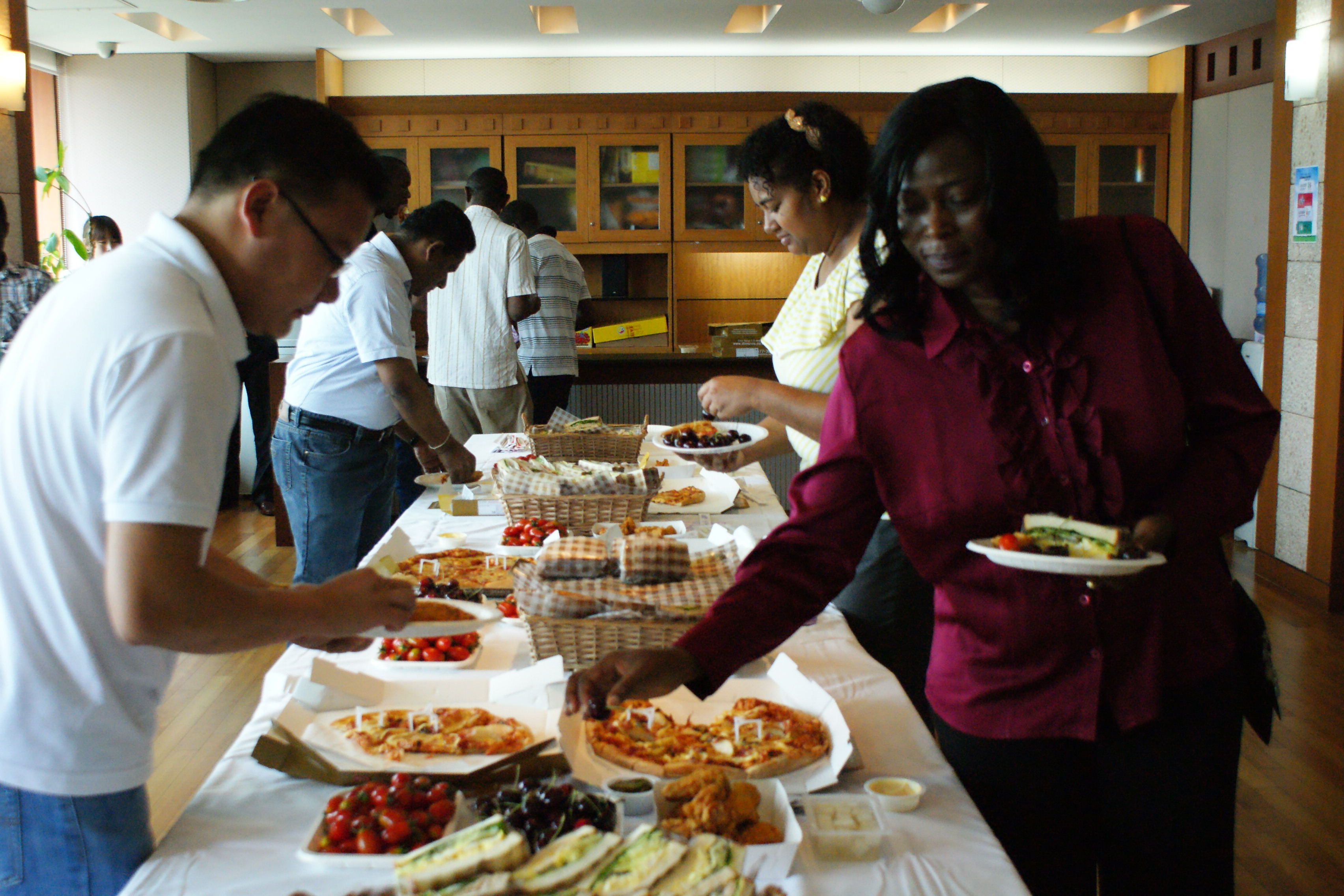
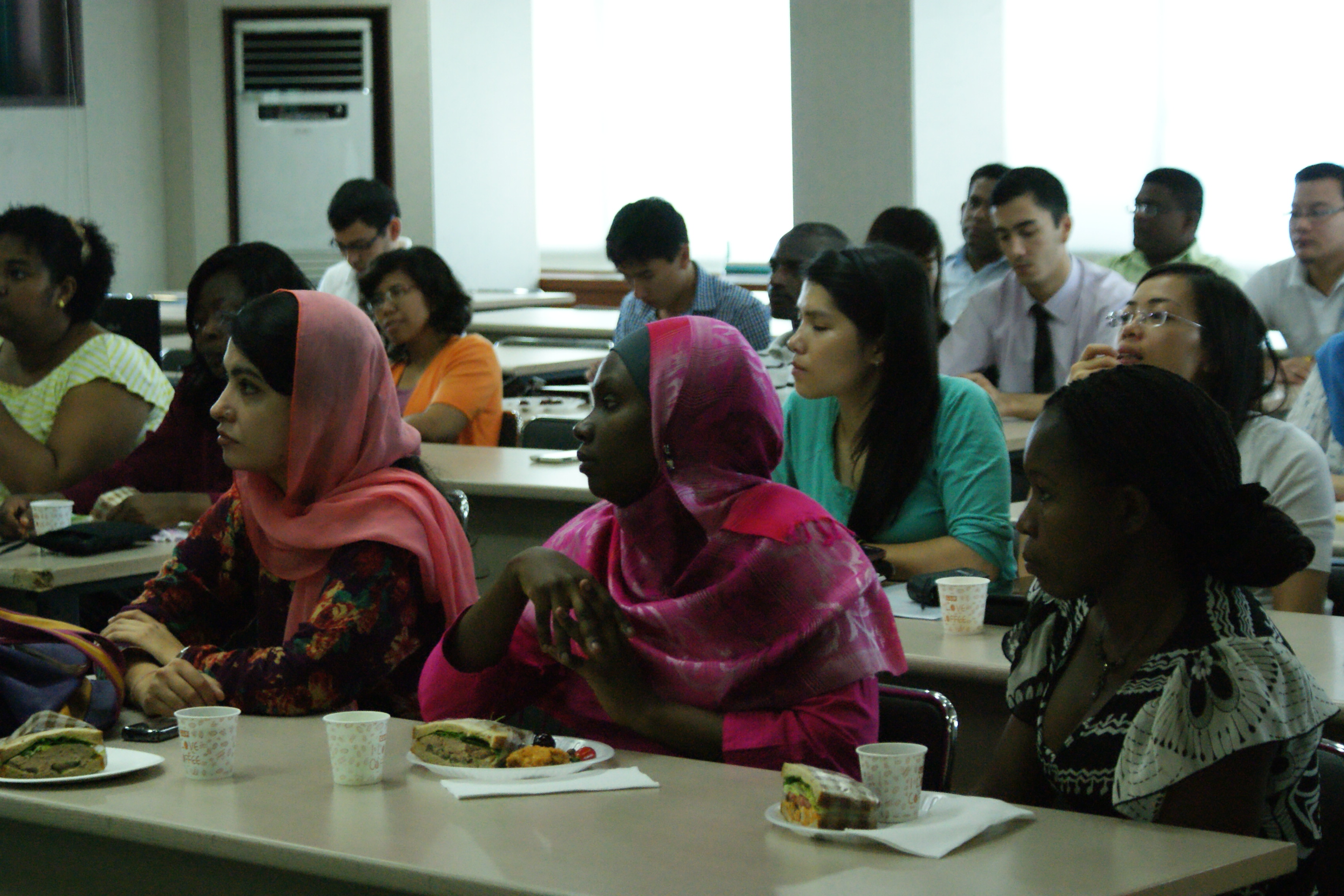
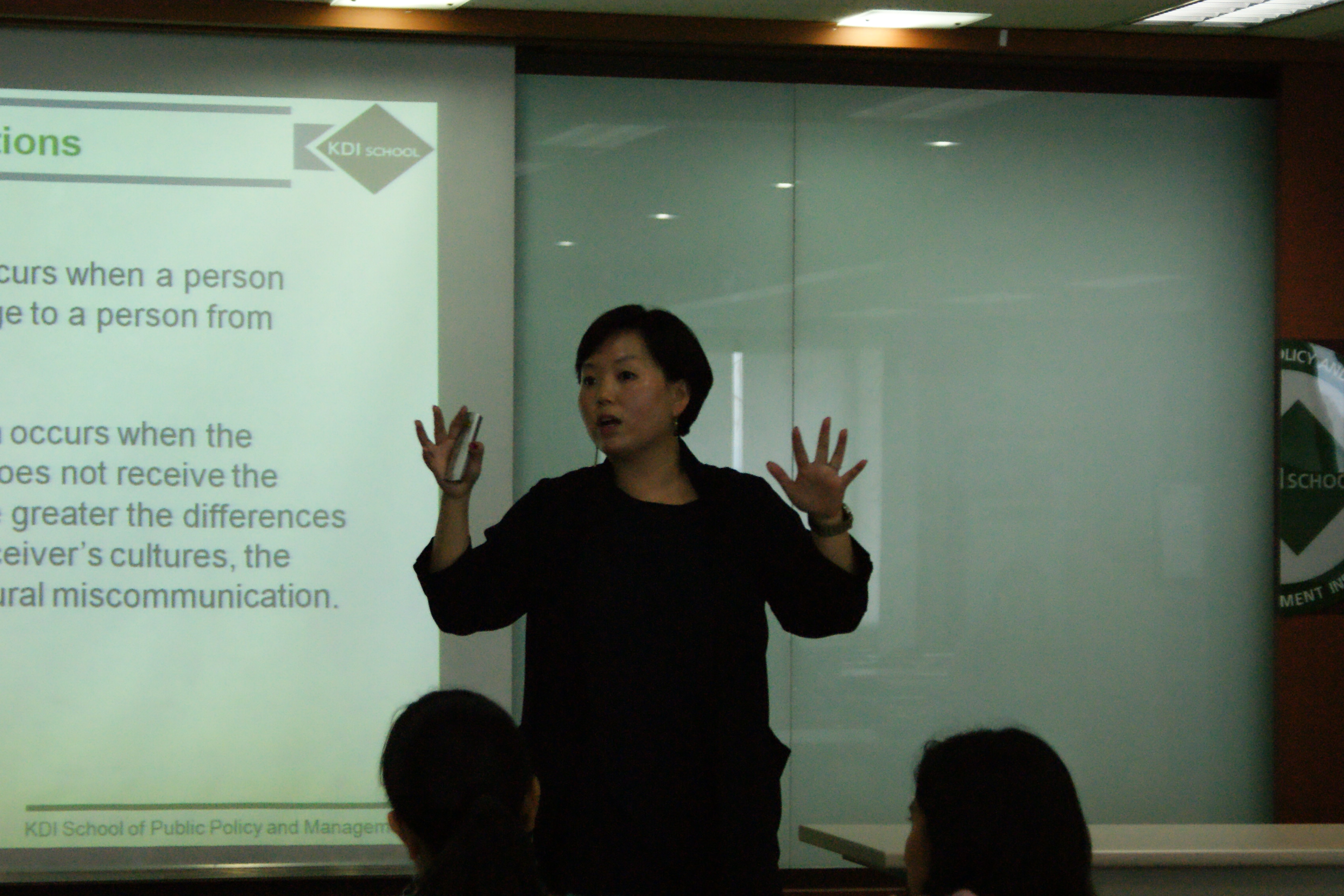
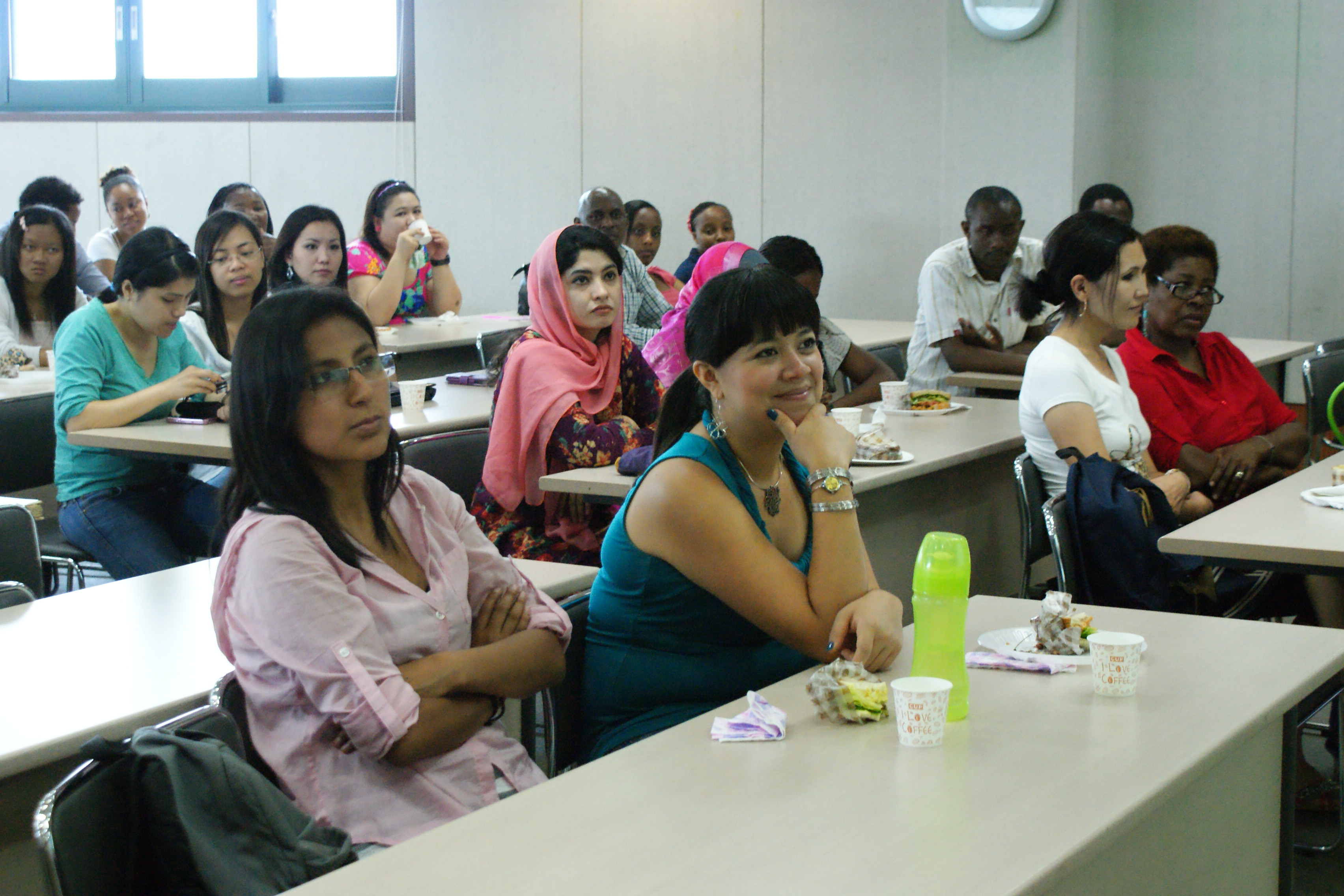
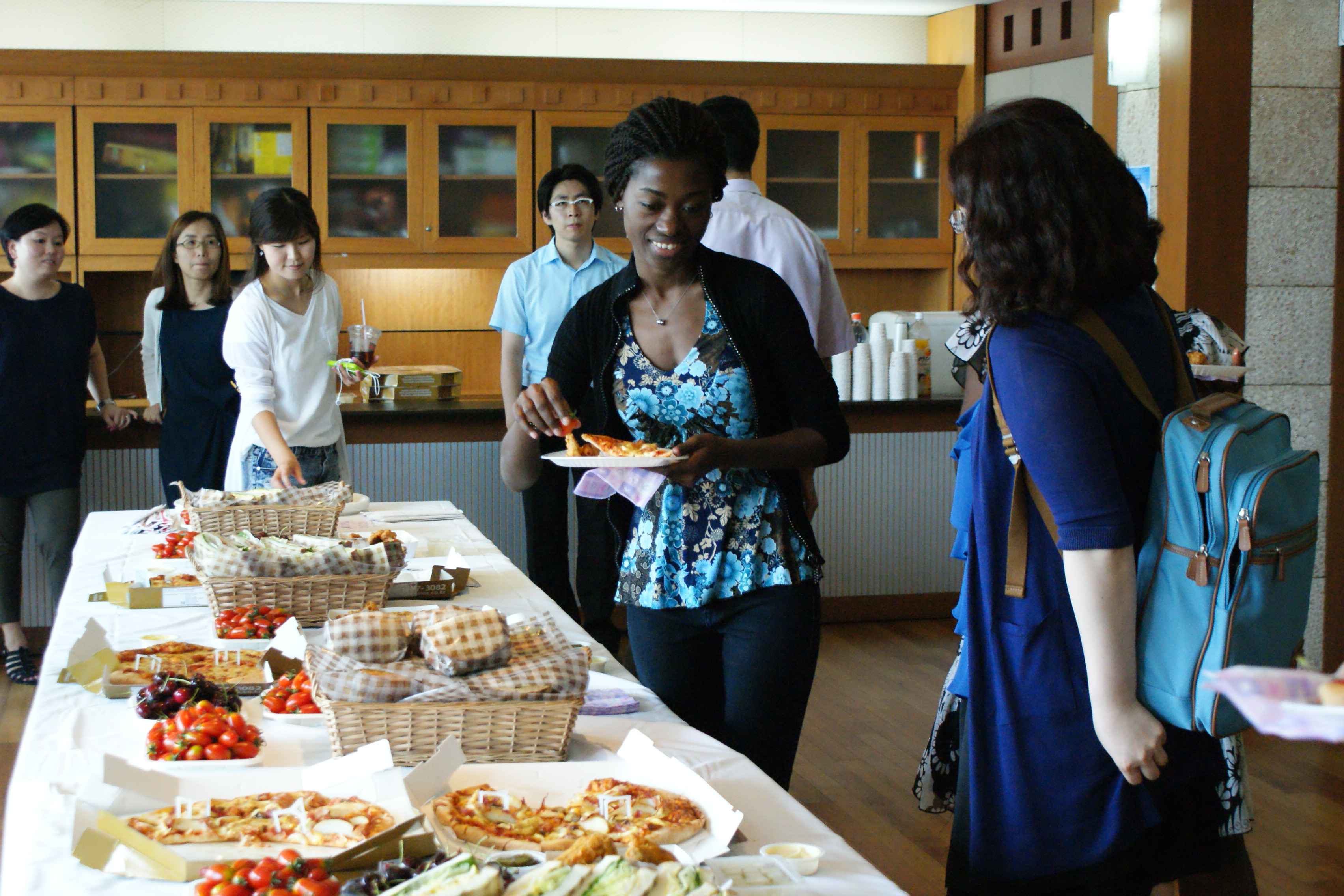
Related News
No Contents.
